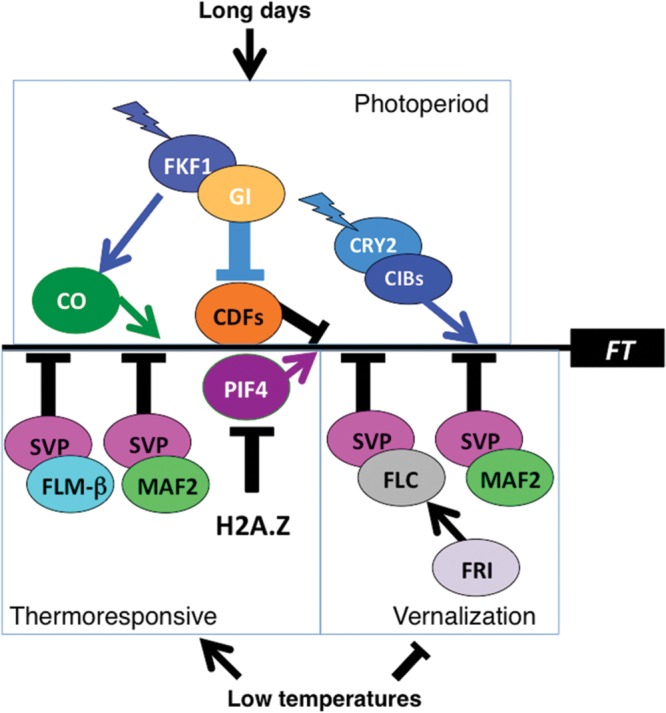FIGURE 1.

Photoperiod and thermoresponsive pathways regulate expression of FLOWERING LOCUS T (FT). Positive regulators of FT expression are indicated by white lettering and negative regulators by black lettering. The thin black horizontal line represents the FT promoter but only to indicate that all these regulatory inputs converge on the FT promoter, without depicting the number or spatial arrangement of binding sites within the promoter. Jagged arrows indicate blue light input in the late afternoon of long days, conferring photoperiod sensitivity in examples of external coincidence of light with a photosensitive phase defined by the circadian clock. Abundance of SVP (SHORT VEGETATIVE PHASE)/MAF2 (MADS AFFECTING FLOWERING 2) and SVP/FLM (FLOWERING LOCUS M)-β complexes declines with increasing temperatures. Additional complexes of SVP with other MAFs are formed but have been omitted for simplicity. Incorporation of the H2A.Z variant, which reduces access of transcriptional activators to the FT promoter, declines with increasing temperature. Similarly, after exposure to low temperature, FLC (FLOWERING LOCUS C) and MAF2 expression is reduced allowing plants requiring vernalization to flower.
